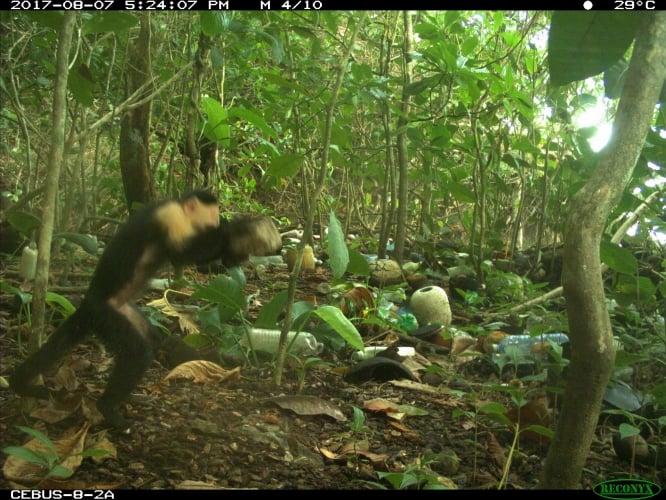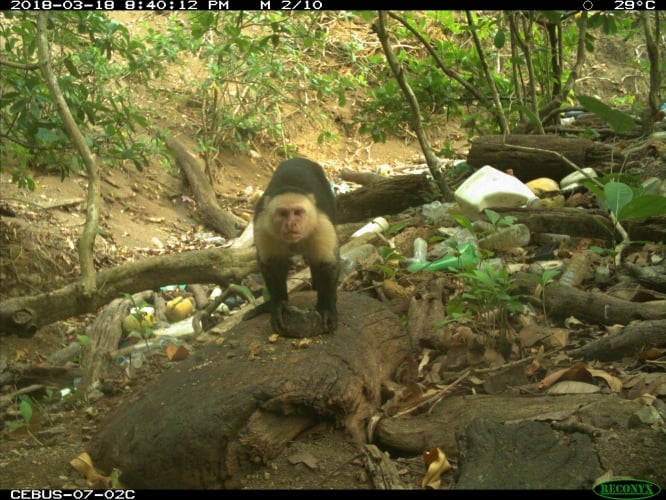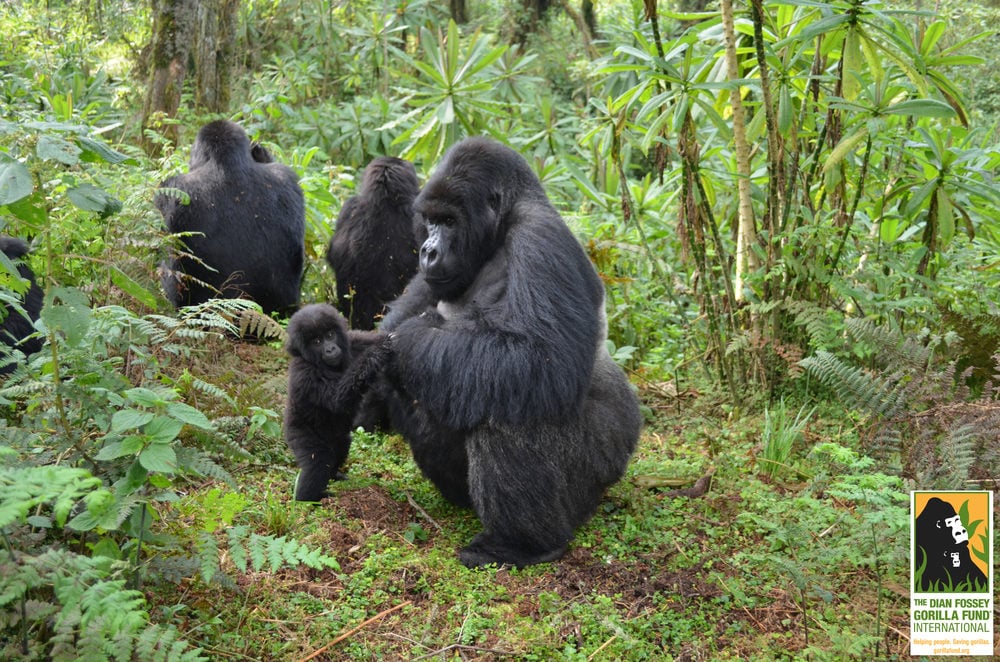Journal Article
White-faced capuchin monkeys in Panama’s Coiba National Park habitually use hammer-and-anvil stones to break hermit crab shells, snail shells, coconuts and other food items, according to visiting scientists at the Smithsonian Tropical Research Institute (STRI). This is the first report of habitual stone-tool use by Cebus monkeys.

“Despite being studied for more than 25 years at several field sites, no species in the genus Cebus has ever been previously observed habitually using stone tools,” said lead author Brendan Barrett, a Leakey Foundation grantee and postdoctoral researcher at the Max Planck Institute for Ornithology and the Max Planck Institute for Evolutionary Anthropology.
To observe white-faced capuchin monkeys (Cebus capucinus), Barrett and colleagues set up motion sensor-triggered camera traps. Based on a year of data from the cameras, researchers never saw adult females using stone tools, despite their presence at the site. Among males, stone-tool use was common. At one site, capuchin monkeys used tools on more than 80 percent of the days they were observed.
Coiba National Park lies about 23 kilometers from Panama’s Pacific Coast and consists of nine larger islands and more than 100 smaller islands. The islands were isolated from the mainland between 12,000 and 18,000 years ago by sea-level rise after the last ice age. Cebus monkeys are found on three of the larger islands, Coiba Island (50,314 hectares), Jicarón Island (2,002 hectares) and Ranchería Island (222 hectares). Stone tool use was only observed on Jicarón Island.

Capuchins used large stones held in both hands to process tough Terminalia catappa nuts, and smaller stones held in one hand to process smaller items such as hermit crabs and snails. They also transported seeds and stones to processing areas.
Researchers concluded that tool-users spend a large amount of time on the ground, which is possible on this protected island where the monkeys have few predators and resources are likely to be as or more scarce than they are on the mainland. Cebus monkeys on the mainland do not use stone tools, although they commonly pound and rub fruit and small-animal prey such as squirrels and lizards on branches to process them as food.
Species in the genus Sapajus, known as robust capuchin monkeys, native to South America, have long been known to use tools. In fact, tool use is one of the characteristics that distinguish this group from the smaller monkeys in the genus Cebus, known as gracile capuchins, found in Central and South America.
Chimpanzees (Pan) and macaques (Macaca) also use stone tools. Tool use in macaques is also limited to islands. The use of stone tools by robust capuchins, gracile capuchins in the Americas and macaques in Thailand to process T. catappa nuts will be an interesting opportunity to compare the origins of this behavior. Tool use in other primates likely preceded tool use by the first human relatives roughly three million years ago.
“In addition to the excitement of adding a fourth (known) genus of stone-tool-using primate to our list, it is exciting to be doing ecological research in Panama’s Coiba National Park, a unique place where there is a lot of potential for discovery for conservation research to be done,” Barrett said. “STRI’s new Coibita field station helps make it possible to do field research on Jicarón and Coiba Islands, remote places where research is logistically challenging.”
You can help support discoveries like this. Donate to The Leakey Foundation today!
“The capuchins of Coiba National Park provide us with an amazing opportunity for studying how and why stone-tool use emerges, as well as what record it leaves behind,” said Meg Crofoot, recipient of The Leakey Foundation’s Gordon Getty Grant for Multidisciplinary Research, research associate at STRI, and professor of anthropology at the University of California, Davis. “White-faced capuchins are a very well-studied species, so stumbling upon a tool-using population—the only one known for the entire genus—was really unexpected and serves as an important reminder of the behavioral diversity waiting to be discovered. It highlights the importance of remote and little-known areas like Coiba National Park, and serves as a vivid call to action to conserve behavioral, cultural and genetic diversity.”
Barrett, B.J., Monteza-Moreno, C.M., Dogandižić, T., Zwyns, N., Ibañez, A. and Crofoot, M.C. 2018. Habitual stone-tool aided extractive foraging in white-faced capuchins, Cebus capucinus. bioRxiv. http://dx.doi.org/10.1101/351619
Members of the research team are affiliated with STRI, the Max Planck Institute for Ornithology in Radolfzell, Germany, the Max Planck Institute for Evolutionary Anthropology in Leipzig, Germany, the Animal Behavior Graduate Group at UC Davis, the Department of Anthropology at the University of Pennsylvania and Estación Científica Coiba, AIP, Panama. The research was funded by a Coss Award for International Field Research, an STRI short-term fellowship, a Leakey Foundation grant, funds from the Max Planck Institute, a Packard Foundation Fellowship and a grant from the U.S. National Science Foundation.
This article was written with material provided by the Smithsonian Institution News Desk.

